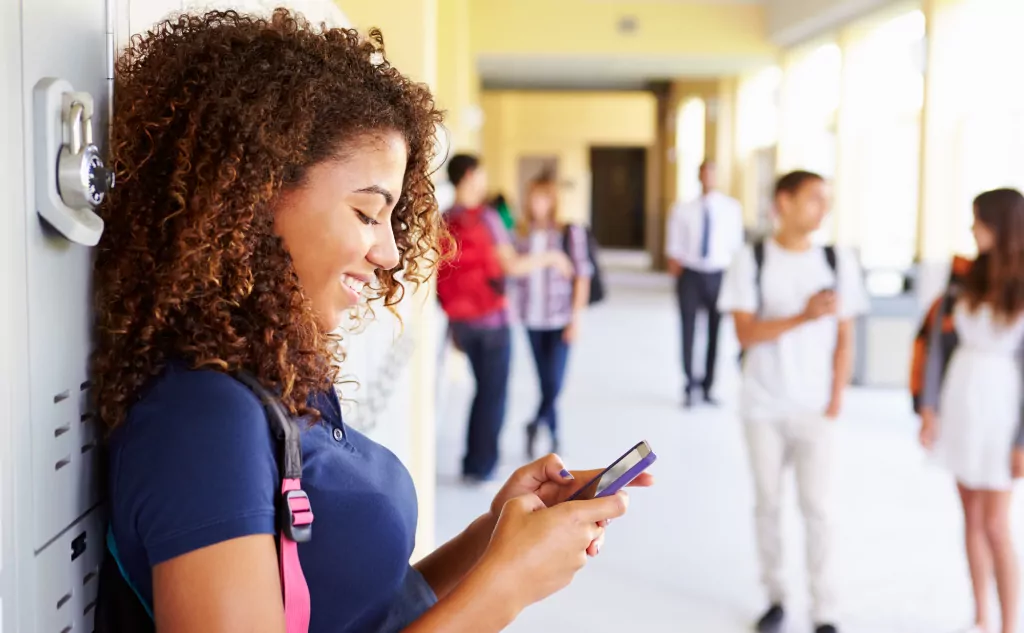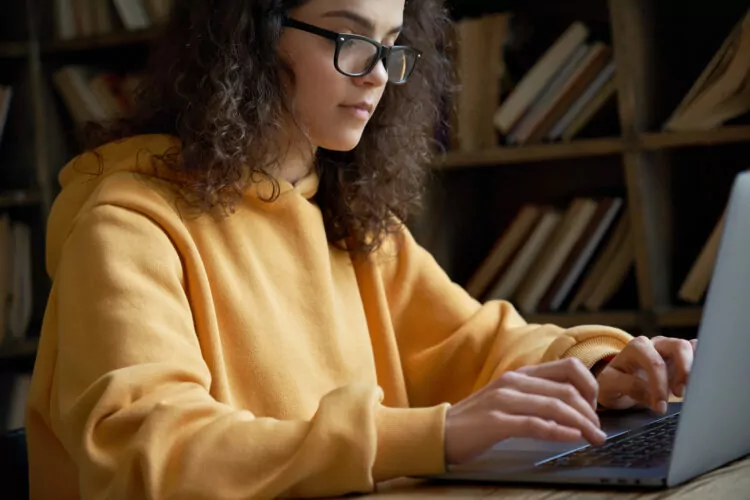Here’s everything about your school Wi-Fi seeing what you search for:
Yes. If you connect to Wi-Fi run by the school, they can see your internet activity.
In fact, they have to be able to see your internet activity in order for the connection to work.
How much they can see and what they do with the information varies widely from school to school.
If you want to learn all about how your school’s Wi-Fi can track your searches and how to stop them, then this article is for you.
Let’s get started!
- Copy Files Off Computer Without Leaving Trace: How to?
- Checking Files Copied From Computer: How To?
- Copying Files From Work Computer: Traceable?
- Employer Sees Browsing History: In Which Cases?
- Search History: Show Up on Internet Bill?

How Does School Wi-Fi Track You? (3 Things)

If you’re on school-run Wi-Fi, that means that every download and upload request you make travels through hardware that the school manages.
To load a website, the school’s networking resources have to communicate with the website and then send information to your device.
The networking devices are necessary middlemen; you can’t get around them.
Ultimately, it means that the school hardware has to know about every site and traffic request that you make while connected to the Wi-Fi.
Schools can use this information as they see fit.
Some schools will block access to certain sites and apps.
They also might use it to track your web surfing and app usage.
Because you use the school network, they absolutely can track everything you do.
Still, what a school can do and will do isn’t always the same thing.
There are challenges with tracking web data, and understanding those can help frame the nature of the problem at hand.
#1 The Challenge of Storing Information

There’s a reason why schools don’t necessarily track everything you do online, even though they technically could if they wanted to.
It comes down to data storage.
It’s one thing to have access to every web request on a network.
It’s another beast entirely to store and make use of all of that information.
This is where things get a little murky, and no two schools will make identical choices when it comes to storing network data.
Schools can use hardware that saves information requests and pairs those requests with IP addresses.
That information can pair your IP address with your account and personal information.
When the school does all of this, they can effectively store every website you browse and everything you do online when connecting via their network.
Here’s why they probably don’t do that (it depends on the school).
Storing that amount of information is expensive.
The school has to purchase lots and lots of hard drives and servers to keep the information for any period of time.
The hardware costs money.
Maintaining it costs even more money, and backing it up adds yet more dollars to the total.
The only way a school is going to save all of this information is if they can justify the cost.
That’s where decision-making will vary from school to school.
The majority of schools will not justify storing such detailed information about all web activity through their network.
It’s just too expensive.
That said, some schools will sell personal information to third parties to pay for the systems.
This is one way that tracking becomes valuable, and this is something that likely does happen.
Because of regulations surrounding student information, it’s difficult to say with certainty whether or not any school has done this with certainty.
What is known is that there are legal ways for a school to profit off of student browsing data.
#2 Understanding Metadata and Anonymized Data

What most schools will do instead of the detailed tracking outlined above are track metadata and log files.
What this means is that they keep track of which websites are accessed and how often, but they don’t really care which individuals are visiting the sites.
Keeping statistics like this requires a lot less storage hardware.
The networking equipment goes through its usual processes, and then the websites that are visited are logged.
Every time a site is visited, that visit is added to the tally.
By dropping personal information and detailed tracking, the whole system is simplified.
This makes it a lot cheaper and a lot easier to justify the costs.
Schools can use traffic statistics to address security risks, figure out how to advertise (for a lot of universities and private schools), plan curricula and activities, and figure out common interests among the student population.
There are countless things that can be done with this data.
Because it is all anonymous, schools can sell statistical information that they collect as well, making your data a possible source of extra revenue for the school.
When it comes to tracking browsing without putting names on it, the practice is common, even among schools.
#3 Tracking Software

There’s an emerging component to this equation.
With the ever-increasing prevalence of remote learning, a lot of schools (at primary and secondary levels) are resorting to the use of tracking software.
They like to actively monitor student behavior via their devices.
There are programs that a school will require you to download in order to attend virtual classrooms.
They are designed to monitor exactly what you are doing.
They might determine if you are really attending online classes, cheating on exams, getting distracted during class, or any number of other things.
While all of this sounds justifiable in some sense, the truth is that these programs don’t have strong limits.
They can spy on you as they see fit.
This type of tracking software is an exception to everything else that you will read here today. If you consent to install it, the software can see whatever it wants.
It is up to the discretion of the school how that power is used.
As long as the software is present, you have no real privacy at all.
Can I Stop My School From Tracking Me? (2 Steps)

The short answer is no.
If you are connecting to a network controlled by the school, they have internet access to your internet usage.
You can’t hide that from them and still successfully use their internet.
There are no special tools or practices that change this.
Even so, there are best practices that you can learn and use when it comes to internet privacy.
Some of these will mitigate how much of your activity your school can track.
They don’t perfect your privacy, but they do steal some of it back.
#1 Private Browsing

Private browsing is one of your strongest defensive tools when it comes to network trafficking.
When you use private browsing, it hides cookies and other locally stored data on your device.
Basically, when you use the internet, your computer tries to save a lot of information related to sites you visit or apps you use.
The stored information allows the computer to load sites a lot faster when you go back to them.
It helps the computer make suggestions for searches, tailor your preferences and provide all of those “mind-reading” features that streamline the user experience.
Here’s the thing.
All of that data is only stored on your device.
It isn’t public information, so it isn’t part of what is used to track you.
But, when you connect to your school’s Wi-Fi, it can potentially access all of those files.
That data is typically stored where it can interact with the network in order to make things run faster.
Private browsing changes this.
When you use private browsing, you create a filter between the network and your stored internet data.
The school’s network cannot see all of your browsing history, cookies, and other data.
It means they can’t mine nearly as much from you, and overall, you have a lot more privacy.
If internet privacy is a concern, you should always enable private browsing when on a school network.
The same goes for browsing on any network you don’t control.
#2 VPNs

VPNs anonymize your device on the internet.
They add an extra middleman to the equation, and it means sites you access don’t really know who you are or where you are.
It’s a great addition of privacy to your browsing, but it’s going to have severely limited returns when it comes to hiding from your school.
Here’s how a VPN works.
You register with a VPN provider.
You then connect to their server which can be anywhere in the world.
All of your traffic requests go through that server.
So, when third parties try to track you, the information they get is for the VPN server instead of your personal devices.
The issue with campus Wi-Fi is that it exists on your side of the VPN. You connect to the Wi-Fi.
The Wi-Fi then goes to the VPN.
The VPN anonymizes you to the rest of the world, but it’s not hiding you from campus Wi-Fi (this all holds true for wired connections).
So, they can still monitor your internet activity the same as if you didn’t have a VPN.
For the most part, VPNs are good for privacy outside of the school network.
All of that said, many VPN services offer apps and other resources that improve privacy protection.
They can help shield your cookies and personal files from the school network.
Additionally, there’s a final concern here.
Even if your school is tracking you, it doesn’t mean that you want other groups tracking you too.
Generally speaking, VPNs are valuable for privacy.

